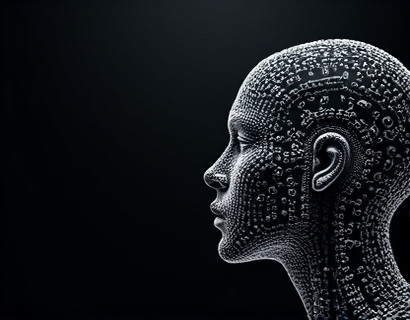Transforming Education with AI-Driven Chat Interfaces: A Focus on Space Exploration
The integration of artificial intelligence in educational settings has opened new avenues for learning, making complex subjects more accessible and engaging. Among these innovations, an AI-driven chat interface stands out for its ability to provide specialized insights into various fields, particularly space exploration and industry expertise. This article delves into how such a platform can revolutionize the way we learn about space, ensuring a secure and enriching experience for learners of all ages.
Enhancing Learning Through Specialized Insights
The beauty of an AI-driven educational chat interface lies in its capacity to deliver specialized insights tailored to the user's level of understanding and interests. For students and educators alike, this means gaining access to detailed information about space exploration, the latest discoveries, and industry expertise without the need for extensive research or sifting through countless resources. The chat interface acts as a knowledgeable guide, providing real-time answers and explanations that deepen comprehension and spark curiosity.
Ensuring Safety and Educational Value
In the digital age, ensuring the safety of learners, especially children, is paramount. An AI-driven chat platform designed for educational purposes incorporates robust safety measures to create a secure environment. Content is meticulously verified for accuracy and reliability, eliminating the risk of misinformation. For younger users, a child-friendly version of the chat interface is available, featuring simplified language and engaging, age-appropriate content. This ensures that learning about space remains both safe and enriching for all users.
Interactive Learning with Space Services
The chat interface offers an interactive way to explore space services, from the functionality of telescopes like the Hubble Space Telescope to the intricacies of satellite technology. Users can ask questions about space missions, the science behind space travel, and the role of various space agencies. The AI responds with detailed explanations, images, and videos, making the learning experience dynamic and immersive. This interactive approach not only educates but also inspires a deeper interest in space and related fields.
Exploring the Hubble Space Telescope
One of the most iconic symbols of space exploration is the Hubble Space Telescope. Through the chat interface, users can delve into the history, technology, and achievements of Hubble. Questions about its orbit, the types of observations it makes, and the impact of its discoveries on our understanding of the universe can be answered with precision. The platform can also provide updates on current Hubble missions and future plans, keeping users informed about the latest in space research.
Industry Expertise and Career Insights
Beyond the scientific aspects, the chat interface offers insights into the space industry, including career paths and the skills required to succeed in this field. Users can learn about the roles of engineers, scientists, and technicians involved in space missions. The AI can provide advice on education and training, internship opportunities, and the day-to-day work of professionals in the space sector. This information is invaluable for students considering a career in space exploration or related industries.
Content Verification and Reliability
A critical feature of the AI-driven chat interface is its commitment to content verification. All information provided is cross-referenced with credible sources to ensure accuracy. This reliability is essential in educational contexts, where students rely on the platform for learning. The verification process involves a team of experts who review and update the content regularly, ensuring that users always have access to the most current and accurate information.
Child-Friendly Features for Safe Learning
For educational institutions and families, the chat interface includes specialized features to ensure a safe and enriching learning experience for children. The child-friendly version of the platform uses simpler language and includes visual aids such as images and animations to make complex concepts more understandable. Parental controls can be set to monitor and guide children's interactions, ensuring that the learning experience remains positive and secure. This approach not only educates children about space but also fosters a love for learning and exploration.
Engagement and Personalization
The AI chat interface is designed to engage users through personalized interactions. It adapts to the user's knowledge level and interests, providing tailored responses and recommendations. For example, a student interested in astronomy can receive more in-depth information about celestial bodies and phenomena, while a teacher can get summaries and lesson plans to use in the classroom. This personalization enhances the learning experience, making it more relevant and engaging for each user.
Collaboration and Community Building
Another significant advantage of the AI-driven chat interface is its ability to foster a sense of community among learners. Users can join discussion groups, ask questions, and share their findings with peers and experts. This collaborative environment encourages dialogue and the exchange of ideas, further enriching the learning experience. Educators can also use the platform to facilitate group projects and discussions, promoting teamwork and critical thinking skills.
Integration with Educational Curricula
The chat interface can be seamlessly integrated into existing educational curricula, complementing traditional teaching methods. Teachers can incorporate the platform into their lesson plans, using it as a resource for research, homework assistance, and project-based learning. The AI's ability to provide detailed and accurate information makes it an invaluable tool for both students and educators, enhancing the overall educational experience.
Future Prospects and Innovations
As AI technology continues to advance, the potential for educational chat interfaces in space exploration and beyond is vast. Future innovations may include more sophisticated natural language processing, allowing for even more natural and intuitive interactions. The integration of augmented reality and virtual reality could further enhance the learning experience, providing immersive simulations of space environments and missions. These advancements will continue to make learning more accessible, engaging, and effective.
Conclusion
The AI-driven educational chat interface represents a significant step forward in making specialized knowledge about space exploration accessible and engaging for learners of all ages. By ensuring content verification, providing a child-friendly version, and fostering a collaborative learning environment, this platform sets a new standard for educational tools. As we look to the future, the potential for such technologies to transform education and inspire the next generation of space explorers is immense.










































